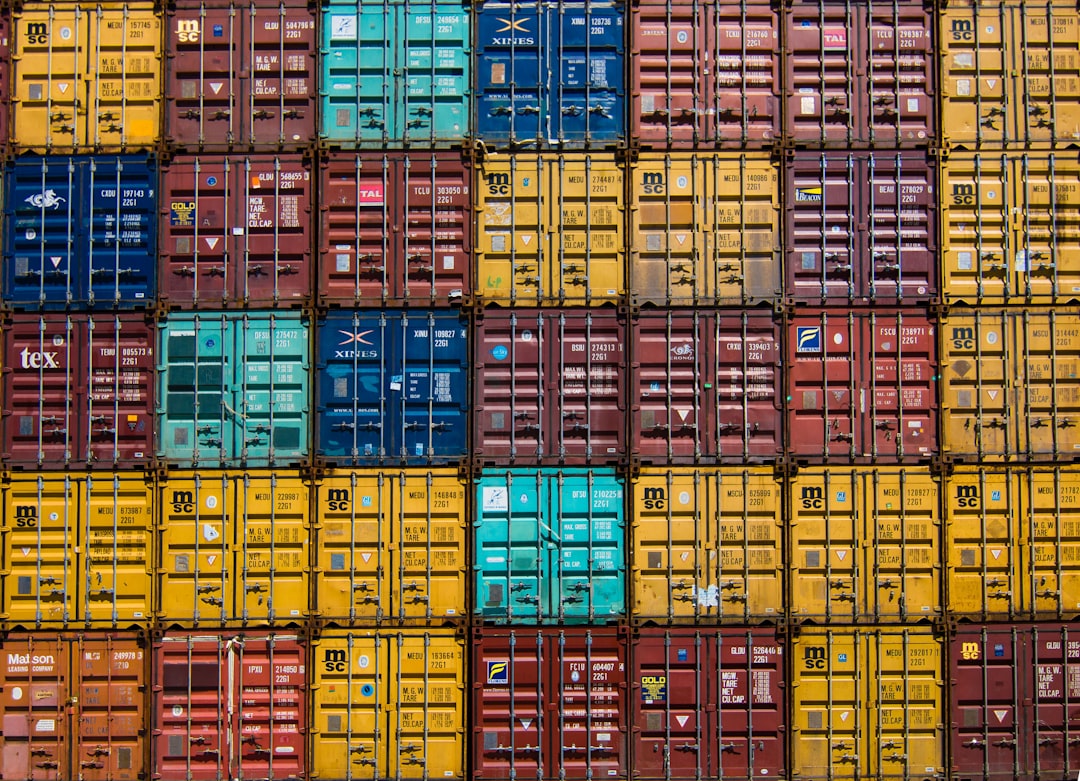In today’s interconnected world, sending and receiving parcels across borders is more common than ever. Whether you’re an e-commerce business expanding internationally, a traveler sending souvenirs home, or simply mailing a gift to a loved one abroad, understanding the nuances of global parcel delivery services is crucial. This guide will navigate the complex landscape of international shipping, highlighting key aspects that vary from one country to another.
From the efficiency of last-mile delivery to the intricacies of customs procedures, each nation presents its unique set of challenges and opportunities. Did you know that the global parcel delivery market is projected to continue its robust growth, driven largely by the booming e-commerce sector? By the end of 2025, it’s expected to reach significant new heights, underscoring the importance of reliable and efficient shipping solutions worldwide. This article will delve into the major players, regional differences, and essential tips to ensure your packages reach their destination smoothly.
Understanding the Global Logistics Landscape
The global logistics landscape is a vast and intricate network, constantly evolving with technological advancements and shifting trade policies. It encompasses everything from air and sea freight to ground transportation and last-mile delivery. The efficiency and reliability of these services are paramount for international trade and personal shipments.
Key Components of International Shipping
International shipping involves several critical stages, each with its own set of considerations. Understanding these components can help you better prepare your shipments and anticipate potential delays or costs.
- First Mile: The initial pickup of the parcel from its origin point. This can be a direct pickup by the carrier or drop-off at a service point.
- Line Haul: The long-distance transportation of the parcel, often via air cargo, ocean freight, or rail, between major hubs.
- Customs Clearance: The process of getting the parcel approved by the destination country’s customs authorities. This is a critical and often complex step.
- Last Mile: The final leg of the journey, from the local distribution center to the recipient’s doorstep. This is often the most challenging and costly part of the delivery process.

Major Global Carriers and Their Reach
Several global players dominate the international parcel delivery market, offering extensive networks and a range of services. These companies leverage vast infrastructure and advanced technology to facilitate cross-border shipments.
Leading International Shipping Providers
The choice of carrier often depends on factors like speed, cost, reliability, and the destination country’s specific requirements. Each carrier has its strengths and areas of specialization.
- DHL: Known for its strong presence in Europe and Asia, DHL offers extensive international express and freight services. It is a key player in global logistics.
- FedEx: A major player in North America and globally, FedEx is renowned for its express shipping services and robust air cargo network.
- UPS: With a significant global footprint, UPS provides a comprehensive suite of services, including express, ground, and freight shipping, particularly strong in North America and Europe.
- National Postal Services: While often slower, national postal services (e.g., USPS, Royal Mail, Deutsche Post) offer cost-effective options for smaller, less urgent international shipments, often collaborating for last-mile delivery.
Tip: For critical international shipments, always compare services from multiple carriers. Consider their track record for the specific destination, transit times, and insurance options.
Regional Variations in Delivery Services
The quality and efficiency of parcel delivery services can vary significantly across different regions and countries. These variations are influenced by infrastructure, economic development, regulatory environments, and geographical factors.
Developed vs. Developing Nations
In developed nations like the United States, Canada, Western Europe, Japan, and Australia, parcel delivery networks are typically highly advanced. They boast efficient infrastructure, widespread automation, and reliable last-mile delivery services, often with multiple delivery attempts and convenient pickup points.
“The maturity of a country’s logistics infrastructure directly correlates with the speed and reliability of its parcel delivery services. Nations with robust road networks, advanced sorting facilities, and widespread internet access for tracking tend to offer superior service.”
Conversely, in some developing nations, challenges such as inadequate road infrastructure, less sophisticated addressing systems, and limited technological adoption can lead to longer transit times and higher rates of delivery exceptions. However, many emerging markets are rapidly investing in logistics infrastructure to support e-commerce growth.
Specific Regional Highlights
- North America: Characterized by vast distances, but highly efficient express networks. E-commerce drives significant volume, with strong competition among carriers.
- Europe: A complex network of national and international carriers. The EU’s single market facilitates cross-border shipping, but individual country regulations and diverse consumer expectations still play a role.
- Asia-Pacific: A region of contrasts, from highly advanced systems in South Korea and Japan to rapidly developing networks in Southeast Asia. China’s e-commerce boom has spurred massive investment in logistics.
- Latin America & Africa: Often face challenges with infrastructure and customs, leading to longer transit times and higher costs. However, growth in e-commerce is driving improvements in key urban centers.

Customs, Duties, and Regulations
Navigating international customs is arguably the most critical and often most complex part of cross-border shipping. Each country has its own set of rules regarding what can be imported, how it must be declared, and what taxes or duties apply.
Understanding Import Duties and Taxes
When a parcel crosses an international border, it is subject to the import regulations of the destination country. This typically includes import duties (tariffs) and taxes (like VAT or GST), which are calculated based on the item’s value, type, and origin.
- Harmonized System (HS) Codes: These are internationally standardized numbers used to classify traded products. Correctly assigning an HS code is crucial for accurate duty and tax calculation.
- De Minimis Value: Many countries have a ‘de minimis’ value, below which imported goods are exempt from duties and taxes. This threshold varies significantly by country. For example, the de minimis for imports into the United States is currently $800, while in some other countries, it can be much lower.
- Prohibited and Restricted Items: Certain items are prohibited from import (e.g., narcotics, counterfeit goods), while others are restricted (e.g., firearms, certain foods, pharmaceuticals) and require special permits or licenses.
For detailed information on customs regulations for specific countries, it’s always best to consult official government customs websites. For instance, the U.S. Customs and Border Protection website provides comprehensive guides for importers and travelers.
Required Documentation
Accurate and complete documentation is vital for smooth customs clearance. Missing or incorrect paperwork is a common cause of delays.
- Commercial Invoice: Details the goods being shipped, their value, and terms of sale. Essential for customs valuation.
- Packing List: Provides a detailed list of contents in each package.
- Air Waybill/Bill of Lading: The contract between the shipper and the carrier, serving as a receipt for the goods.
- Certificate of Origin: Verifies the country where the goods were manufactured, important for trade agreements and tariffs.
Tracking and Technology Innovations
Technology has revolutionized parcel delivery, making it more transparent, efficient, and reliable. Real-time tracking, automation, and data analytics are now standard features across most major carriers.
The Power of Real-Time Tracking
Modern tracking systems allow senders and recipients to monitor a parcel’s journey from pickup to delivery. This transparency provides peace of mind and helps manage expectations, especially for international shipments.
- End-to-End Visibility: Most major carriers offer detailed tracking updates, including customs clearance status and estimated delivery times.
- Proactive Notifications: Many services now provide automated email or SMS updates for significant milestones or delays.
- Predictive Analytics: Leveraging data, some systems can predict potential delays and reroute packages to optimize delivery paths.

Emerging Technologies in Logistics
The logistics industry is continuously adopting new technologies to enhance efficiency and customer experience.
- Automation and Robotics: Automated sorting facilities and robotic warehouses are becoming more common, speeding up processing times.
- AI and Machine Learning: Used for route optimization, demand forecasting, and identifying potential issues before they arise.
- Blockchain: Explored for secure and transparent supply chain management, improving traceability and reducing fraud.
- Drone and Autonomous Vehicle Delivery: While still in early stages for widespread use, these technologies promise to revolutionize last-mile delivery in specific contexts.
Tips for Successful International Shipping
Sending a parcel internationally doesn’t have to be daunting. By following a few key guidelines, you can significantly increase the chances of a smooth and timely delivery.
Preparation is Key
Thorough preparation can prevent many common shipping issues, from delays to damaged goods.
- Proper Packaging: Use sturdy boxes, adequate cushioning, and strong sealing tape. Remember that international parcels undergo more handling than domestic ones.
- Accurate Addressing: Double-check the recipient’s full address, including postal codes and contact numbers. In some countries, specific address formats are crucial.
- Declare Contents Accurately: Be honest and detailed about the contents and value of your parcel on customs forms. Misdeclarations can lead to significant fines or seizure.
- Understand Prohibited Items: Before packing, verify that your items are not prohibited or restricted in the destination country.
Choosing the Right Service
The best service depends on your priorities: speed, cost, or specific features.
- Express vs. Economy: Express services offer faster delivery but at a higher cost. Economy options are more budget-friendly but take longer.
- Insurance: Always consider purchasing shipping insurance, especially for valuable items. It provides financial protection against loss or damage.
- Delivery Duties Paid (DDP) vs. Delivery Duties Unpaid (DDU): Understand who is responsible for paying duties and taxes. DDP means the sender pays, while DDU means the recipient pays upon delivery. This impacts the recipient’s experience.
Further Reading: For more insights into global trade and logistics trends, you might find reports from organizations like the World Trade Organization (WTO) valuable, as they often cover the broader economic context influencing parcel services.
Conclusion: Navigating the World of Global Shipping
The world of international parcel delivery is dynamic and complex, shaped by a myriad of factors from infrastructure and technology to customs regulations and geopolitical landscapes. While major carriers offer extensive networks, understanding the specific nuances of each destination country is key to a successful shipping experience.
As global e-commerce continues its upward trajectory, the efficiency and reliability of cross-border logistics will only grow in importance. By staying informed about regional variations, meticulously preparing your shipments, and leveraging available tracking technologies, you can confidently send and receive parcels anywhere in the world.
What has been your most challenging or surprising experience with international parcel delivery? Share your stories and tips in the comments below!

